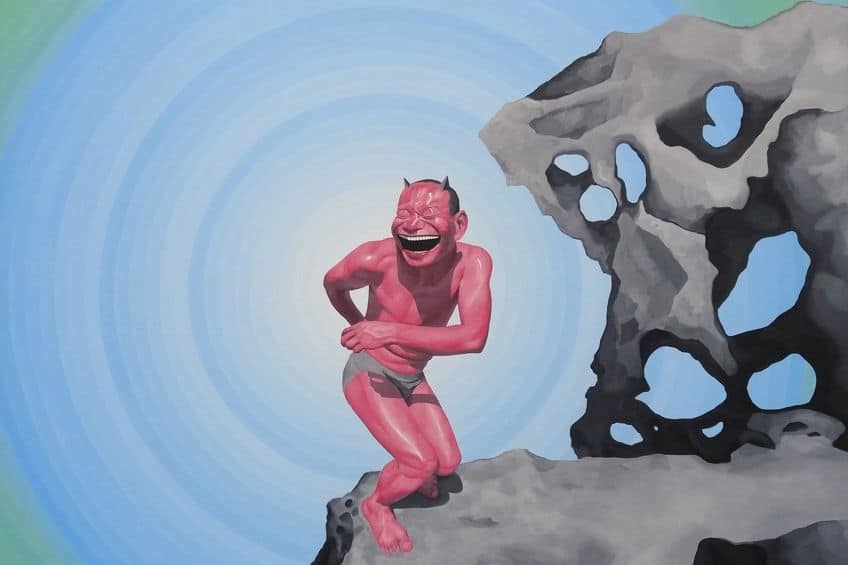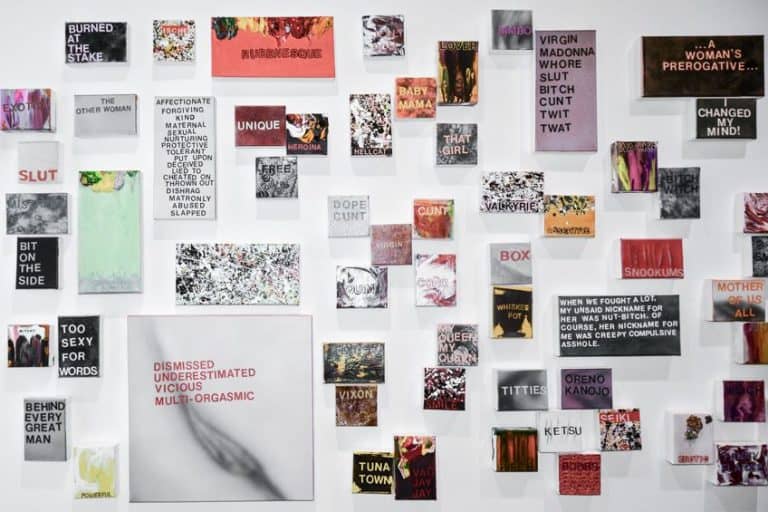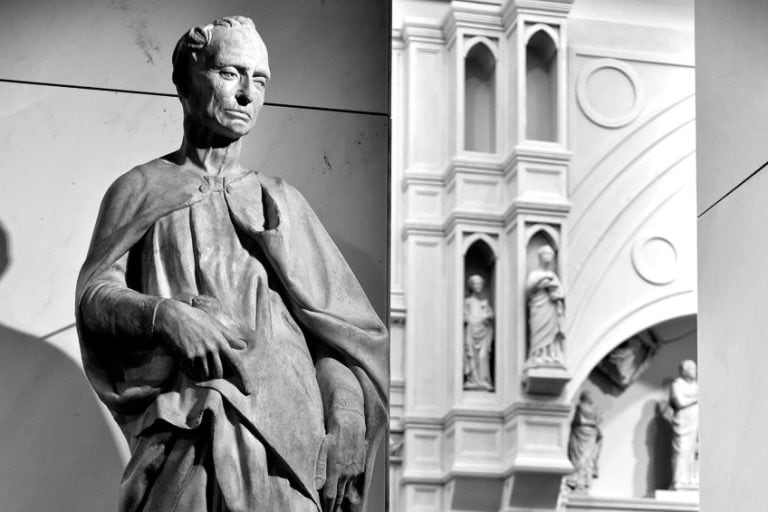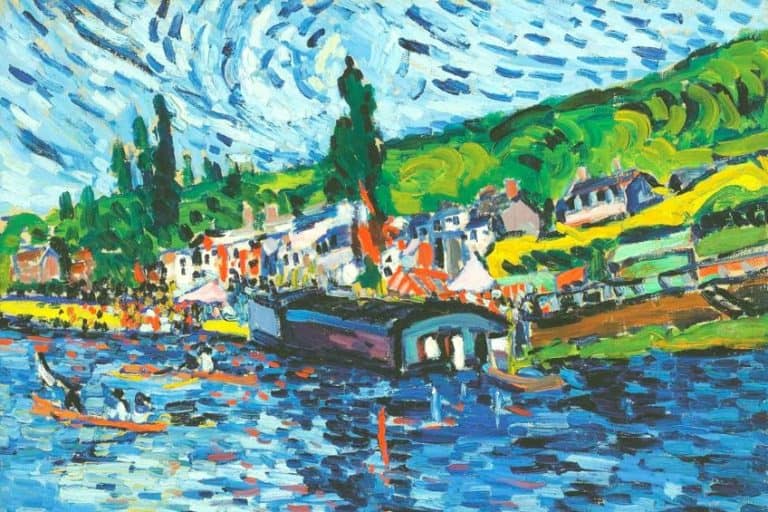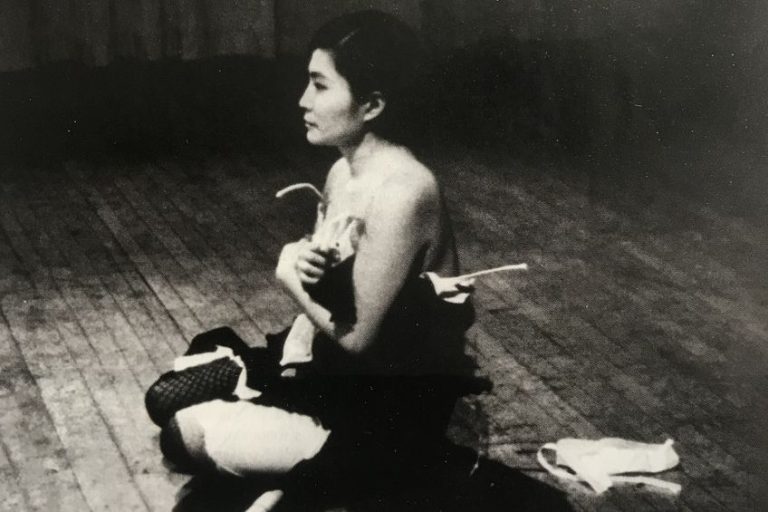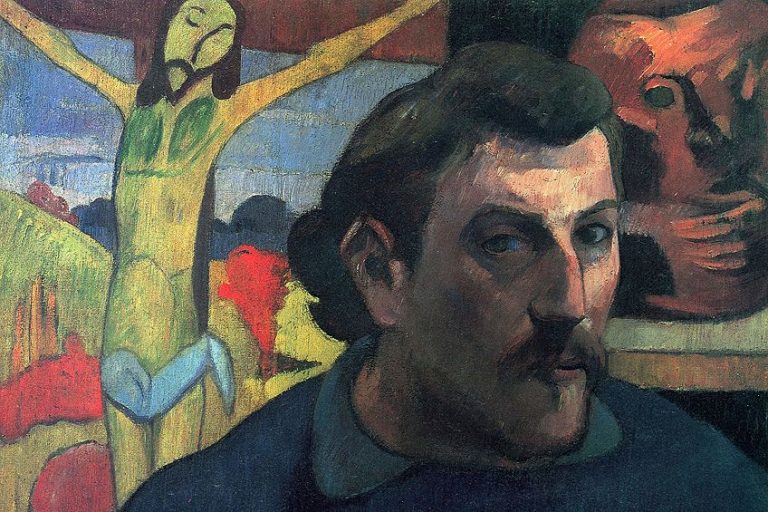Yue Minjun – A Key Figure in Chinese Cynical Realism
Yue Minjun, a prominent contemporary Chinese artist born in 1962 in Daqing, Heilongjiang Province, is renowned for his iconic “laughing figures” paintings. His works often feature rows of identical figures, all with exaggerated grins, reflecting a complex interplay of humor, satire, and social commentary. Minjun’s art emerged during the 1990s amidst China’s rapid social and economic transformations, making him a key figure in the country’s contemporary art scene. His vibrant and thought-provoking pieces have garnered international acclaim, showcasing a blend of traditional Chinese artistic influences with modern conceptual depth.
Key Takeaways
- Yue Minjun employs his signature style of laughter to explore themes in contemporary society.
- His work is emblematic of the Cynical Realism movement and comments on post-Mao China.
- Minjun’s art has achieved global recognition, influencing and shaping the discourse of Chinese contemporary art.
Biographical Background
| Birth | 1962 |
| Death | Present |
| Place of Birth | Daqing, Heilongjiang, China |
| Genre of Work | Cynical Realism |
Yue Minjun is a Chinese contemporary artist famed for his distinctive style that blends satire, humor, and introspection. Born in 1962, Yue has become synonymous with images of his own face captured in a state of hysterical laughter—a motif that recurs across his oil paintings, sculptures, and prints. These enigmatic self-portraits serve not only as a personal trademark but act as a lens through which he comments on the social and political state of contemporary life.

Minjun’s artistic journey is deeply interconnected with the evolution of Chinese art in the post-Mao era. Often associated with the Cynical Realism movement, his work is a reaction to the disillusionment with the Chinese status quo and the rapid transformation of Chinese society. Through his exaggerated, almost surreal depictions, Yue prods at the veneer of contentment and conformity, using the act of laughter as both an assertion of freedom and a mask for inner angst. His exhibitions have made significant impacts on both a national and international scale, further solidifying his influence and notoriety in the art world.
Early Life and Education
Born in 1962 in Daqing, China, Yue Minjun’s connection with art started early with his drawing lessons at the age of ten. His talent became apparent, leading him to pursue formal education in art after completing high school in 1980.
However, practical circumstances led him first to work as an electrician, and then on an oil rig in Tianjin—a city experience that would later influence his artistic perspective.
Rise to Prominence
Yue Minjun’s rise to prominence was catalyzed by the 1989 Tiananmen Square uprising, a pivotal event that led him to join an artists’ colony near Beijing. It was here that he developed his signature style: vibrant, satirical self-portraits frozen in laughter. The support and critique from influential art critic Li Xianting played a notable role in boosting Yue’s visibility within China’s avant-garde art scene.

Current Career
As a contemporary artist, Yue Minjun continues to work predominantly in Beijing. His art, especially his laughing self-portraits, remains highly sought after in China and internationally.
Yue plays a significant role in the global art market, with his works consistently displayed in exhibitions worldwide, recognizing him as a crucial figure in both Chinese Cynical Realism and the broader contemporary art landscape.
Artistic Style and Themes
Yue Minjun’s work is distinguished by its embodiment of the Cynical Realism movement, extensive use of laughter as a recurring motif, and the reflection of China’s socio-political landscape in the shift from Cultural Revolution influences to more contemporary depictions.

Cynical Realism Movement
The Cynical Realism movement emerged in China’s art scene in the 1980s as artists sought new forms of expression following the end of the Cultural Revolution in 1976. Yue Minjun, often grouped with fellow artists Fang Lijun and Liu Wei, uses his art to comment on the absurdity of life post-Cultural Revolution.
Despite refuting the label, his self-portraits and portraits exhibit hallmarks of this movement—distorted expressions of joy masking the underlying skepticism of society.
Symbolism of Laughter
Laughter is a central theme in Yue Minjun’s art, where it acts as a complex symbol. His iconic images feature figures, often clones of his own self-portrait, in exaggerated states of mirth. This incessant laughter can be interpreted in myriad ways: from a coping mechanism against despair to a satirical jab at society’s solemnity. The omnipresent laughter in his work bridges the aesthetic gap between Surrealism and Pop Art, blending personal narrative with cultural critique.

Influence of Historical Events
Yue Minjun’s paintings are implicitly influenced by pivotal historical events such as the Tiananmen Square protests. Although not overtly political, the artist’s canvases weave indirect references to China’s past, particularly the Cultural Revolution.
These backdrops serve as silent witnesses to the tumultuous history that informs the essence of his art—a resonance felt by those familiar with the events and translated into the visual narrative through a vocabulary unique to Yue Minjun’s creative universe.
Major Works and Exhibitions
Yue Minjun’s art is distinct and immediately recognizable, featuring his iconic self-images and a unique approach to contemporary art. His major works have been showcased around the world in both paintings and sculptures, leaving a notable mark on the art scene.

Notable Paintings
- Execution: This is one of Yue Minjun’s most famous works, drawing influence from Western paintings, particularly those by Édouard Manet.
- The “smiling faces” series: Prolific oil paintings depicting Yue himself in a state of frozen laughter, a repetitive and signature motif.
Sculptures and Installations
- Sculptural works: These often replicate the jubilant, laughing figure seen in his paintings, transitioning the theme from two-dimensional to three-dimensional forms.
- Public installations: Yue’s enigmatic figures have translated into large-scale installations, viewable in public spaces and eliciting interaction from viewers.

Global Exhibitions
- Denver Art Museum: His work has been part of the larger conversations on contemporary art hosted by this institution.
- Saatchi Gallery: Located in London, this gallery has featured Yue Minjun’s pieces in previous exhibitions, reflecting his international relevance.
- Kunsthalle Mannheim: In Germany, Yue Minjun has taken part in exhibitions, further consolidating his presence in Europe.
- Queens Museum of Art: His artworks have crossed over to American audiences in spaces like this New York museum.
- Shenzhen Art Museum: Representing his roots, Yue Minjun’s works have also been prominent in Chinese art establishments.
- Biennale Participation: He has been an active participant in high-profile global events such as the Gwangju Biennale and the Shanghai Biennale in 2004, amplifying his international presence.
These paintings, sculptures, and exhibitions demonstrate Yue Minjun’s artistic journey and the broad spectrum of creativity that defines his ongoing legacy in the art world.
Impact and Legacy
The powerful art of Yue Minjun has shaped the trajectory of Chinese contemporary art, drawing both acclaim and critique for his distinctive approach, characterized by a blend of humor, grotesque imagery, and veiled sociopolitical commentary.

Influence on Contemporary Chinese Art
Yue Minjun is a prominent figure within the Chinese contemporary art scene. His iconic style, often featuring exaggerated self-portraits with wide, laughing expressions, has influenced a generation of artists. These recurring figures, sometimes seen as a response to the spiritual vacuum left after the Cultural Revolution, represent a new era of artistic freedom and critic of societal constraints.
Yue’s art continues to resonate with both Chinese and international audiences, reflecting the complexities of modern China.
Reception and Criticism
Initial reception to Yue Minjun’s work was divided, with some heralding his distinct ability to combine ridicule and a spiritual vacuum within his pieces, and others criticizing him for what appeared to be a lack of seriousness. Despite this, his paintings have become highly sought after in the global art market, with auction houses such as Christie’s and Sotheby’s achieving record prices for his work. His viewers are often left to question the earnestness of the laughter depicted, inviting deeper contemplation of contemporary societal issues.
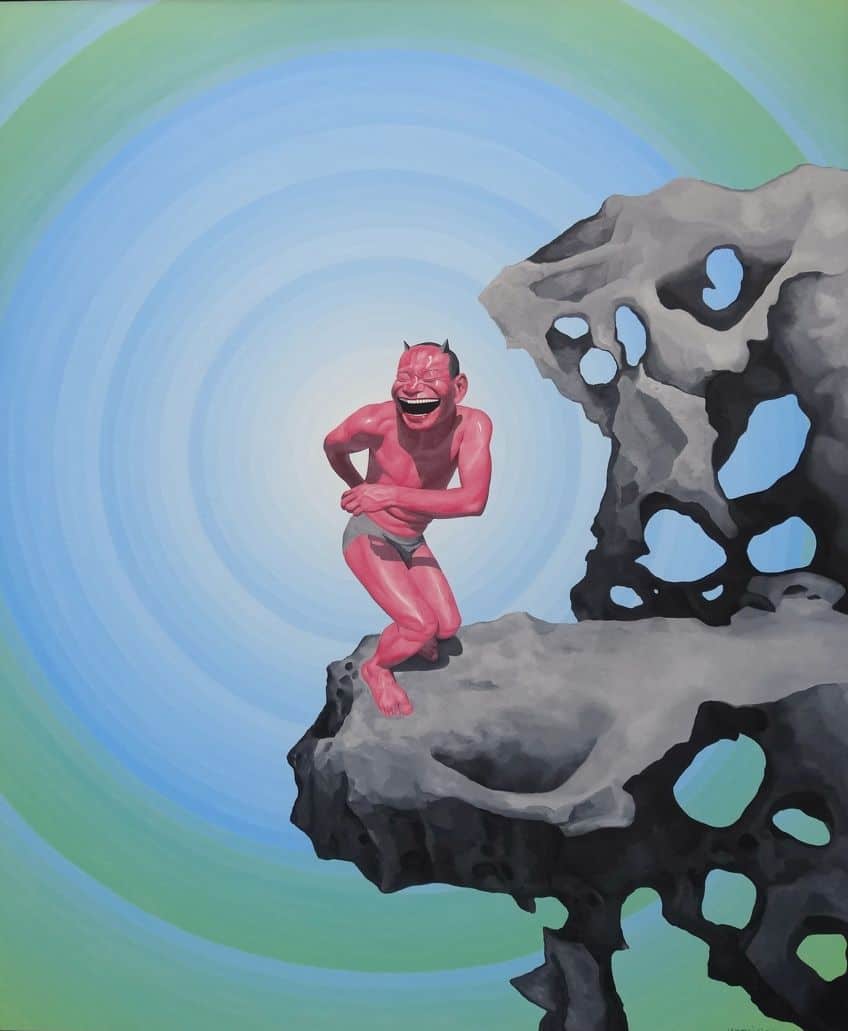
Yue Minjun Today
Today, Yue Minjun remains a significant contemporary artist, with his work being a poignant fixture in major exhibitions and collections worldwide. His depictions have cemented his status as both an influencer and a mirror to the viewer, reflecting both the humor and the tension that underscores contemporary life and the international art scene. Yue Minjun’s enduring presence signals not only the vibrancy of his creations but also the persistent relevance of his commentary on the world around us.
Yue Minjun’s artistic journey exemplifies a fusion of cultural introspection and global relevance. Through his distinctive laughing figures and playful yet profound narratives, Minjun invites viewers to contemplate the complexities of human experience, identity, and societal dynamics. His contributions to contemporary art not only reflect the evolution of Chinese artistic expression but also resonate universally, sparking conversations and connections across borders. As Minjun continues to inspire with his innovative vision, his legacy remains an integral part of the ever-evolving dialogue in the art world.
Frequently Asked Questions
What Themes Does Yue Minjun Explore in His Artwork?
Yue Minjun’s artwork often delves into explorations of identity, the human condition, and societal roles. His work is noted for its critical perspective on modern life and its engagement with themes of existentialism and absurdity.
How Has Yue Minjun’s Style Evolved Over His Career?
Throughout his career, Yue Minjun’s style has transitioned from vibrant portrayals of the laughing figure to a more diverse range of subjects and emotions. His recent works show a dramatic departure from his signature laughing portraits, indicating an evolution in both subject matter and emotional depth.
What Is the Significance of the Laughing Figures in Yue Minjun’s Paintings?
The laughing figures in Yue Minjun’s paintings are a trademark element that represents a multifaceted view of the human psyche. Often seen as a critique of cultural conformity and societal pressures, the exaggerated smiles blend irony and humor with a suggestion of underlying despair.
Isabella studied at the University of Cape Town in South Africa and graduated with a Bachelor of Arts majoring in English Literature & Language and Psychology. Throughout her undergraduate years, she took Art History as an additional subject and absolutely loved it. Building on from her art history knowledge that began in high school, art has always been a particular area of fascination for her. From learning about artworks previously unknown to her, or sharpening her existing understanding of specific works, the ability to continue learning within this interesting sphere excites her greatly.
Her focal points of interest in art history encompass profiling specific artists and art movements, as it is these areas where she is able to really dig deep into the rich narrative of the art world. Additionally, she particularly enjoys exploring the different artistic styles of the 20th century, as well as the important impact that female artists have had on the development of art history.
Learn more about Isabella Meyer and the Art in Context Team.
Cite this Article
Isabella, Meyer, “Yue Minjun – A Key Figure in Chinese Cynical Realism.” Art in Context. May 15, 2024. URL: https://artincontext.org/yue-minjun/
Meyer, I. (2024, 15 May). Yue Minjun – A Key Figure in Chinese Cynical Realism. Art in Context. https://artincontext.org/yue-minjun/
Meyer, Isabella. “Yue Minjun – A Key Figure in Chinese Cynical Realism.” Art in Context, May 15, 2024. https://artincontext.org/yue-minjun/.


